What is ADHD?
Discover what ADHD is and how it presents in children through a neuroaffirming lens. Learn to recognize its different profiles and how occupational therapy can support each child’s growth and wellbeing.
Lily Vesty
1/15/20254 min read
At Neuronaut, we believe that all minds are valuable and unique. To build a more inclusive world, we first need to understand what neurodiversity means and how we can realistically support those who think, feel, and experience the world differently.
In this article, we’ll cover:
What is ADHD?
How ADHD can present in children and adolescents
How ADHD may show up differently in girls and boys
What to do if you think your child might have ADHD
How occupational therapy can support children with ADHD
What is ADHD?
ADHD stands for Attention Deficit Hyperactivity Disorder a form of neurodivergence that describes variations in attention, energy, and impulse patterns. These differences shape how a person experiences and interacts with the world at home, at school, and in their community (Salari et al., 2023).
In the past, ADHD and ADD were considered separate conditions, but they are now seen as different presentations within the same spectrum:
Predominantly inattentive (ADHD-I)
Predominantly hyperactive-impulsive (ADHD-H)
Combined presentation (ADHD-C)
These presentations describe different patterns of attention and activity, not fixed categories, but ways to understand and support each child’s unique profile.
How ADHD can present in children and adolescents
Every child expresses their neurotype differently. Instead of thinking about “symptoms,” we can notice traits and patterns that reflect their natural ways of processing the world. These patterns can shift as children grow, or depending on how supported and safe they feel in their environment.
Predominantly inattentive presentation (ADHD-I):
Children may have a rich inner world, often daydreaming or becoming deeply absorbed in topics they love. They might prefer creative or open-ended learning and benefit from visual supports or step-by-step guidance for more structured tasks.Predominantly hyperactive-impulsive presentation (ADHD-H):
Children may show high energy, enthusiasm, and spontaneity. They often learn best through movement, play, and hands-on experiences. Their natural curiosity brings excitement and fresh ideas to group settings.Combined presentation (ADHD-C):
Some children experience both of these attention and energy styles, shifting between moments of deep focus and bursts of activity.
Recognising these differences allows adults to design spaces where each child’s rhythm, focus, and creativity are valued (Salari et al., 2023; Epstein & Loren, 2013).
How ADHD may show up differently in girls and boys?
ADHD looks different for each child, and research shows its expression can vary across genders too. Boys tend to channel their energy outwardly through movement and active behaviours, making their traits more noticeable. In contrast, girls frequently experience hyperactivity internally, with a quick, busy mind that might not be visible outwardly. Some girls also develop strategies to subtly mask or soften these traits in social situations, which can make their ADHD less apparent and sometimes harder to recognise. Understanding these differences encourages a compassionate perspective that values each child’s distinct way of engaging with the world, fostering an environment where all children feel affirmed and free to be themselves without pressure to conform. (Salari et al., 2023; Rucklidge, 2021).
What to do if you think your child might have ADHD:
All individuals have different patterns of attention, interest, and energy, and that diversity is part of being human. When your child’s environment feels mismatched to how they process or regulate, it can help to talk with professionals who understand neurodiversity.
A good starting point is speaking with your GP, paediatrician, or another healthcare professional familiar with your child’s development. They can help you explore assessments and guide you toward supports that align with your family’s values and your child’s strengths (May et al., 2023).
Join the conversation
If this article has inspired you or raised questions, we’d love to hear from you. Share it with others who might also benefit from these ideas and help us spread the message further.
Together, we can celebrate differences and build a society that embraces neurodiversity in all its forms.
References
Epstein, J. N., & Loren, R. E. A. (2013). Changes in the Definition of ADHD in DSM-5: Subtle but Important. Neuropsychiatry (London), 3(5), 455–458. doi:10.2217/npy.13.59
Kelsch, K. L., & Miller, K. L. (2016). Occupational therapy interventions for ADHD: A systematic review [Master's scholarly project, University of North Dakota]. UND Scholarly Commons. https://commons.und.edu/ot-grad/107
May, T., Birch, E., Chaves, K., Cranswick, N., Culnane, E., Delaney, J., Derrick, M., Eapen, V., Edlington, C., Efron, D., Ewais, T., Garner, I., Gathercole, M., Jagadheesan, K., Jobson, L., Kramer, J., Mack, M., Misso, M., Murrup-Stewart, C., ... Bellgrove, M. (2023). The Australian evidence-based clinical practice guideline for attention deficit hyperactivity disorder. Australian & New Zealand Journal of Psychiatry, 57(8), 1101–1116. https://doi.org/10.1177/00048674231166329
This content has been created for informational purposes only and should not replace professional evaluation. The article has been reviewed by our editorial team.
How occupational therapy can support children with ADHD:
Occupational therapy focuses on helping children feel confident and capable in everyday life. Rather than “treating symptoms,” OTs work to remove barriers and create environments that fit the child, not the other way around.
An occupational therapist can support your child by:
Creating meaningful routines that match their energy and focus patterns.
Building organisation and planning strategies through playful, practical approaches.
Partnering with families to deepen understanding of ADHD and other neurotypes.
Exploring sensory needs and co-regulation tools to support calm and attention.
Collaborating with schools and communities to promote inclusion and participation.
Each plan is individualised and grounded in what matters most to your child: their interests, relationships, and sense of self (Kelsch & Miller, 2016).
Celebrating every brain
When we approach ADHD through a neuroaffirming lens, we shift from asking “What’s wrong?” to “What does this child need to excel?” Every brain has its own unique rhythm, with a mix of strengths and challenges. By collaborating with families, educators, and therapists with curiosity and respect, we can thoughtfully adapt environments and activities to match each child’s individual profile. This helps children build on their strengths, work through challenges, and develop confidence in their abilities. At Neuronaut, we believe understanding the brain is just the start; true transformation happens when we fully embrace and celebrate the diversity of all neurotypes, recognising that every brain contributes uniquely to the world. 🚀

Do you have a comment?

Find us here
258 Warrigal Road, Glen Iris, VIC 3146
Follow us


ABN 93673889506
Member of UniHub Monash University

Call us

We acknowledge the Traditional Aboriginal Owners of Country and pay our respects to them, their connections to land, sea, and community. We pay our respects to their Elders past and present and future Traditional Owners.
We respect and welcome people of all backgrounds, genders, sexualities, abilities and cultures.






